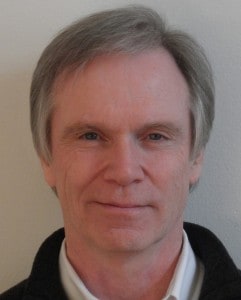Patrick Cavanagh
Université Paris Descartes
 Patrick Cavanagh is the head of the Centre of Attention and Vision at the Université Paris Descartes and a Distinguished Research Professor at Dartmouth College. He received a undergraduate degree in Electrical Engineering from McGill University in 1968 and a PhD in Cognitive Psychology from Carnegie-Mellon University in 1972. He taught at the Université de Montréal from 1972 to 1989 and then at Harvard University from 1989 to 2008. Current projects study the roles of visual attention in selecting and creating visual representations, and the properties and strategies of visual attention in normal and brain damaged subjects. He has also explored the contribution of various features such as shadow, color, motion, and texture to representations of visual form and these experiments led to his interest in art as a source of data for neuroscience.
Patrick Cavanagh is the head of the Centre of Attention and Vision at the Université Paris Descartes and a Distinguished Research Professor at Dartmouth College. He received a undergraduate degree in Electrical Engineering from McGill University in 1968 and a PhD in Cognitive Psychology from Carnegie-Mellon University in 1972. He taught at the Université de Montréal from 1972 to 1989 and then at Harvard University from 1989 to 2008. Current projects study the roles of visual attention in selecting and creating visual representations, and the properties and strategies of visual attention in normal and brain damaged subjects. He has also explored the contribution of various features such as shadow, color, motion, and texture to representations of visual form and these experiments led to his interest in art as a source of data for neuroscience.
The Artist as Neuroscientist
Saturday, May 14, 11:00 am, Museum of Fine Arts, Marly Room, St. Petersburg, Florida
A piece of art can trigger many emotions and impressions, many of them just as the artist intended. However, the same painting may also reveal, unintentionally, much about the workings of the brain: how the brain recovers the light and space and surfaces that we see. Painters often stray from photorealistic styles, taking liberties with the rules of physics to achieve a more effective painting. Critically, some of these transgressions of physics such as impossible shadows, shapes, or reflections go unnoticed by viewers – these undetected errors are the ones that tell us which rules of physics actually count for visual perception. As artists find the rules they can break without penalty, they act as neuroscientists and we have only to look at their paintings to uncover and appreciate their discoveries. Which means that 40,000 years of art also counts as 40,000 years of documented, neuroscience research, a record unmatched in any other discipline. We will survey art from cave paintings to the modern era and show how to do “science by looking”, unlocking the discoveries in art every time you give it a painting a second, knowing look.
Cavanagh, P. (2005) The artist as neuroscientist. Nature, 434, 301-307.
Cavanagh, P., Chao, J., & Wang, D. (2008). Reflections in art. Spatial Vision, 21, 261-270.
Perdreau, F. & Cavanagh, P. (2011). Do artists see their retinas? Frontiers in Human Neuroscience, 5:171.
Sayim, B., & Cavanagh P. (2011). The art of transparency. i-Perception, 2, 679-696.
Sayim, B., & Cavanagh P. (2011). What line drawings reveal about the visual brain. Frontiers in Human Neuroscience, 5:118, 1-4
Attending the Public Lecture
The lecture is free to the public with admission to the museum. (Museum members: Free; Adults $17; Seniors 65 and older $15; Military with Id $15; College Students $10; Students 7-18 $10; Children 6 and under Free)
VSS attendees will receive free admission to the Museum May 13-18 by showing your meeting badge.
About the VSS Public Lecture
The annual public lecture represents the mission and commitment of the Vision Sciences Society to promote progress in understanding vision, and its relation to cognition, action and the brain. Education is basic to our science, and as scientists we are obliged to communicate the results of our work, not only to our professional colleagues but to the broader public. This lecture is part of our effort to give back to the community that supports us.
